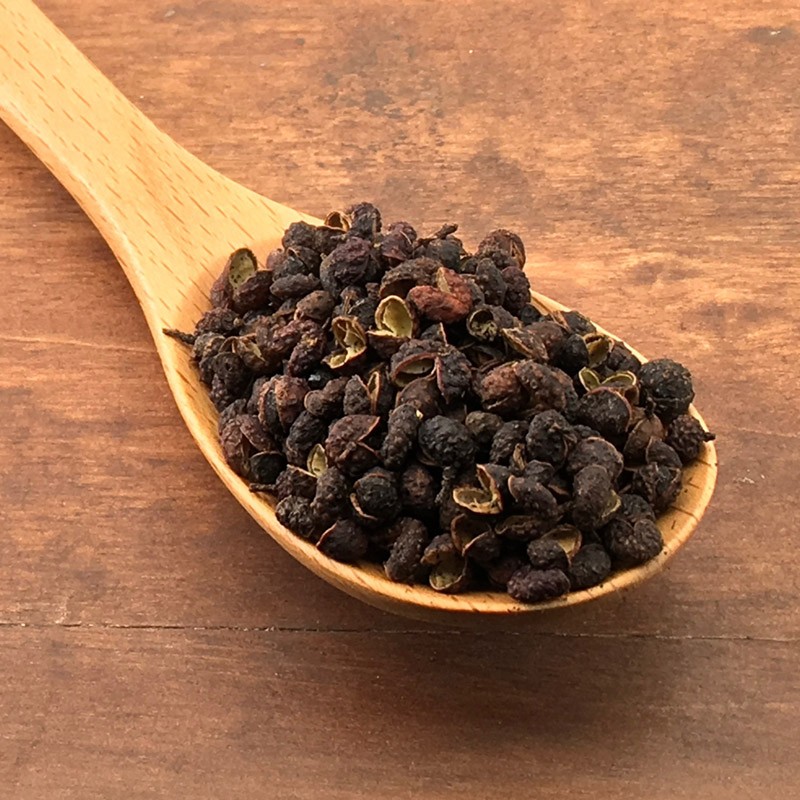 Call it Timur or Timut pepper, its the same. Locally known as Timur in Nepal, our Timut Pepper is getting very popular in the European and American market. Do you know about Timut pepper from Nepal? Here is a brief intro of our unique pepper berries that has gained popularity among chefs around the world because of its unique savour.
Call it Timur or Timut pepper, its the same. Locally known as Timur in Nepal, our Timut Pepper is getting very popular in the European and American market. Do you know about Timut pepper from Nepal? Here is a brief intro of our unique pepper berries that has gained popularity among chefs around the world because of its unique savour.
What kind of spice is the Timut Pepper?
Timut pepper is a real pepper rarity, actually not a pepper, but the capsule fruit of a rhombus plant (Rutaceae).
This prickly shrub Zanthoxylum alatum (synonym Z. Armatum) has a stature height of up to 10 meters. It is a close relative of the Chinese Sichuan pepper (Zanthoxylum Bungeanum). In Nepal, this plant grows wild at an altitude of about 2000 meters, in the mountainous regions of the Himalayas and is not cultivated but grows wild. Its capsule fruits turn reddish-brown when mature and break open. Inside there are up to 4 small black seeds.
Is the Timut Pepper professionally cultivated?
Yes, in Nepal, our Timut berries are collected sustainably and maintaining quality standards. This delicious pepper grows wild and comes, therefore, exclusively from wild collections. The harvest is very complex and challenging. Because the plant is widely spread in the wild, the harvest is complicated. The collection is furthermore done manually by residents.
How does this Nepalese pepper variety look like?
They are small, dried berries that burst open in the middle when mature. They have a reddish-brown color. Many Nepalese pepper berries have a fruit stalk, and even some still have the black seeds inside.
What does Timut Pepper taste like?
Its taste is fruity, just like fresh citrus fruits (grapefruit and lemon), and therefore sometimes referred to as grapefruit or lemon pepper. It has a unique scent of lemons and is more aromatic than traditional Sichuan pepper. It is a bit spicy and leaves a slightly stunned sensation on the tongue, which is typical of spices of the rhombus plants.
How do I use Timut Pepper?
Only the dried fruits are aromatic. Please remove the black seeds from the inside before use. They have no taste, but a sandy consistency.
Put the Timut pepper in a pepper mill or a mortar, and chop it before using it as a seasoning.
Application of our Nepal Timut Pepper
The fresh, sour taste of Timut pepper blends well with young asparagus or an artichoke puree. It gives fish and meat a delicate aroma. It transforms a simple fricassee into a dream of the senses.
The Timut is firmly anchored in the Asian cuisine because it is not a hot spice. But it’s still mostly combined with chili. Its irresistible aroma spices up spicy wok dishes, curry, poultry, pork, and vegetarian plates.
Timut pepper is even a spice for the preparation of desserts. Because of its unique flavor, even a strawberry compote or pineapple sorbet gets of it a fruity-spicy note. You should use it just before serving the plate, freshly ground. It flavors dark chocolate, whether it’s the dark cover for Florentine or home-made chocolate ice cream. Whatever you prefer as a chocolate dessert, try it with some timut pepper.
How do I store it correctly?
Like all spices, store them cool dry and in a dark place.
Source: https://www.gewuerze-orlandosidee.de
